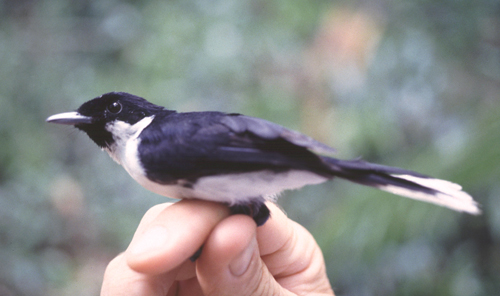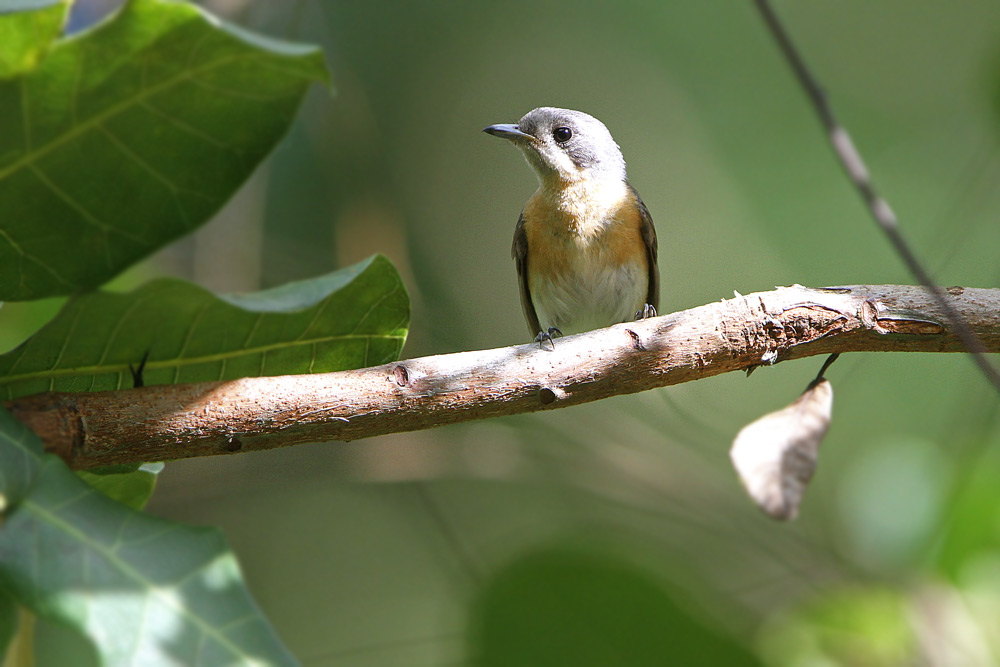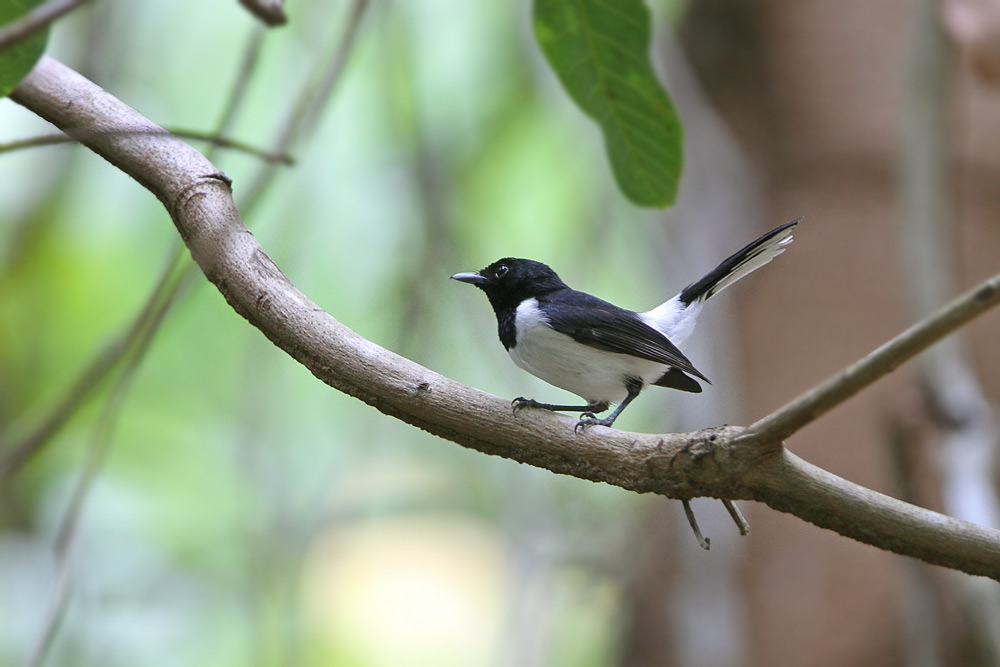
Monarcha everetti
TAXONOMY
Monarcha everetti Hartert, 1896, Tanahjampea, Flores Sea.
Considered an allospecies with the nearby Flores monarch
(M. sacerdotum). There is scant knowledge about its relationship
with the other species in the genus.
OTHER COMMON NAMES
English: Buru Island monarch, Everett’s monarch, white-tailed
monarch; French: Monarque d’Everett; German: Weisschwanzmonarch;
Spanish: Monarca de Puntas Blancas.
PHYSICAL CHARACTERISTICS
5.5 in (14 cm); smaller than Flores monarch. Adult head, chest,
upperparts, and central tail feathers are black, all other feathers
are white. Immature birds grayish or brown above and white
below, with rusty-colored wash and often a buff rump.
DISTRIBUTION
Endemic to Tanahjampea, a small island in the Flores Sea,
south of Sulawesi.
HABITAT
Common in forested areas, also found in scrub and mangroves
with scattered, large trees.
BEHAVIOR
Found in pairs throughout the year, but outside breeding season
they join small flocks with same and other species. Noisy,
especially when foraging, and like many other Monarchidae,
cock or fan the tail when alarmed, accompanied by harsh,
scolding call.
FEEDING ECOLOGY AND DIET
Not known.
REPRODUCTIVE BIOLOGY
A tremulous, plaintive whistle may be associated with the
male’s courtship or territorial display.
CONSERVATION STATUS
Not scarce on Tanahjampea, but tiny global range puts the
species at risk from habitat loss and degradation; fewer than
2,500 pairs probably remain. Logging is the common threat to
all forest birds in Indonesia, and has been underway on this island
since the 1920s, initially to create grazing areas for cattle.
Although white-tipped monarchs appear to survive in logged
or nonforest habitats, their densities are much lower, putting
them at greater risk to other threats. As of 2001, no specific
measures had been taken to identify or to protect their core
breeding areas.
SIGNIFICANCE TO HUMANS
None known.
Other popular Animals
Photo Gallery of - White-tipped monarch




 Animalia Life
Animalia Life